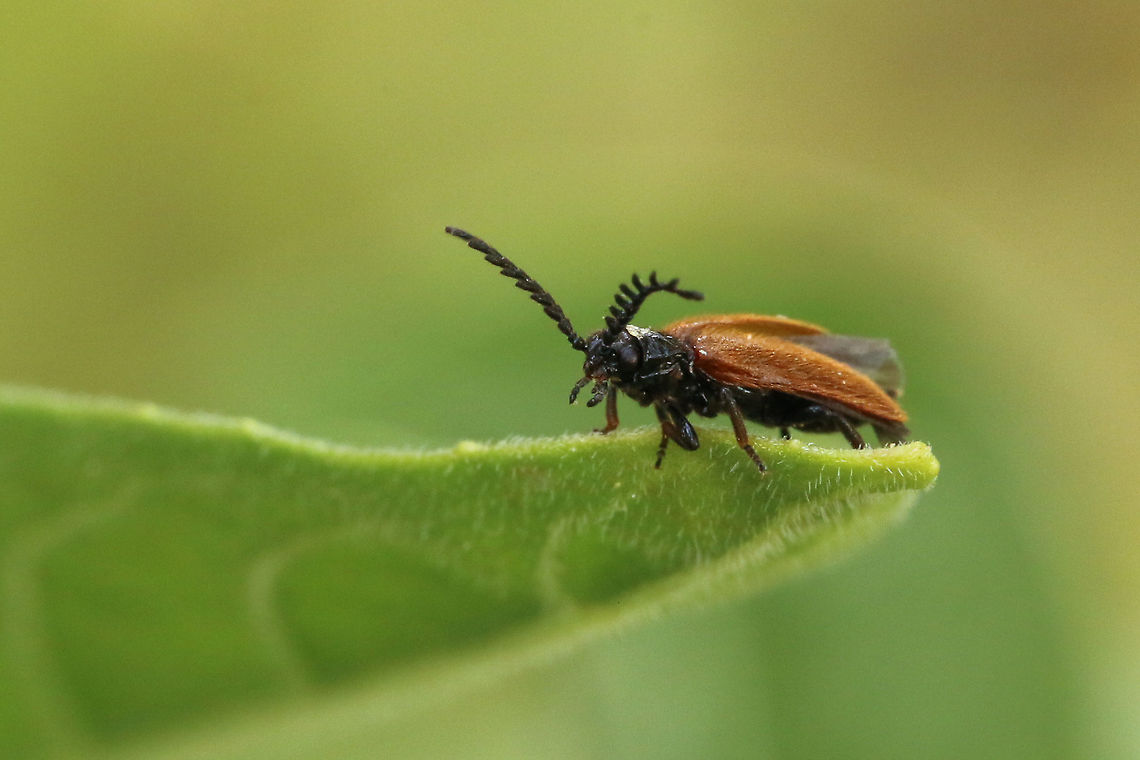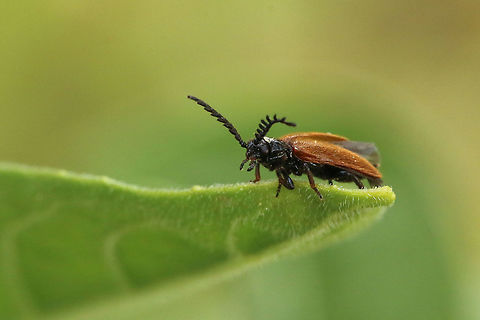 PromotedSpecies introCountry intro
PromotedSpecies introCountry intro
False Firefly Beetle (Male)
This was easy to identify as there is only a single species of Drilid. These are considered to be nationally scarce, but what makes this little beetle so special, is that it displays one of the most extreme forms of sexual dimorphism. The male, pictured here, looks like a beetle, can fly, and are found on flowers and foliage.
The female however, looks more like a grub or caterpillar and lives on the ground amongst the leaf litter where they feed on snails. The larvae, well...I quote from Wiki..'The eggs are laid in the soil under the litter and the young larvae of this beetle are covered with hairs. They are predators of terrestrial snails. Upon reaching maximum size (about 20 mm) the larva seeks out a snail shell in which to pupate. By clinging to a snail's shell via the suction cup on the terminal segment of the abdomen, the larva then bites the snail, injecting paralyzing venom that liquefies the snail's flesh with digestive enzymes. The flesh of the snail is then soft enough for the larva to burrow through the snail and enter the shell. Once installed, the larva undergoes hypermetamorphosis; the legs are reduced and the hair largely disappears. This secondary larva will overwinter in the snail shell before pupating.'


comments (11)
Posted 5 years ago
Niel Posted 4 years ago
https://www.jungledragon.com/specie/8221/long-nosed_lycid_beetle.html Posted 4 years ago